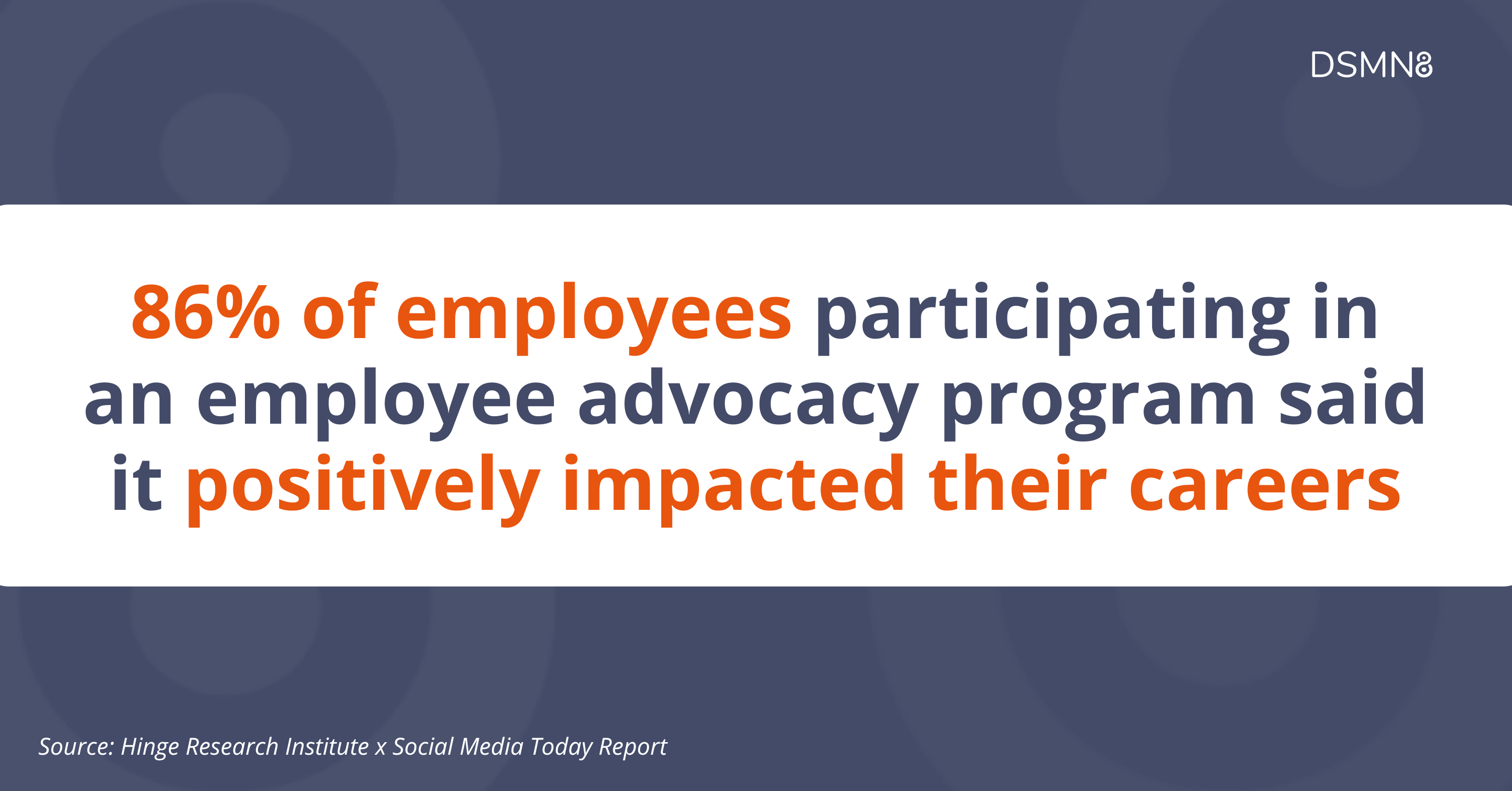
Understanding the true impact of employee advocacy on an organization can be challenging.
It goes way beyond simply looking at social media clicks and sales. Employee advocacy changes your company culture at scale, empowering employees to build personal brands and become closer to your brand values and goals.
So, how can we showcase this impact to leadership teams and your wider organization?
In this guide, I’ll cover the key metrics typically tracked to monitor the results of an employee advocacy program and dive into how to demonstrate the impact beyond the numbers.
At the end of this article, you’ll find a short survey to send your advocates to reveal how your program influences employee engagement, career development, and successes that aren’t trackable in the traditional sense.
How to Track Employee Advocacy Success
Below is a brief overview of 3 key methods for monitoring the progress of your advocacy program over time.
To find out how to track this data, read our guide to employee advocacy metrics.
Rather than simply tracking all the metrics, aligning them with your program allows you to demonstrate success.
For example, increasing traffic to your website’s careers page or job listings is a clear indicator of success if your primary focus is employer branding or a recruitment drive.
1. Social Media & Website Analytics
Your first area of focus is likely to be social media metrics and website traffic.
This is a clear way to see the results generated from employees sharing your company’s content with their networks.
Look at content reach, engagement, and the total size of employee networks. Tracking these will reveal the impact your advocates and their content have over time.
If you’re using a platform like DSMN8, you can see all these metrics at a glance in the analytics dashboard and get more granular with detailed reports.

2. Earned Media Value
Earned media value refers to the amount of money your company would have paid for the clicks achieved by your advocates.
Let’s say LinkedIn charges your company $5 per click. If your advocates generate 100 clicks, that’s equivalent to $500 in ad spend.
This is a good way to demonstrate your program’s ROI and the impact advocacy could have on your marketing strategy. Reducing ad spend can free up your budget for creative content campaigns, tech, or additional resources.
Try our ROI calculator to reveal the numbers you could expect to see.

3. Business Results
This one is crucial for maintaining support from your senior leaders.
What impact does employee social media activity have on tangible business results?
To answer this, use Google Analytics to see the source of conversions on your website.
Adding UTM tracking to employee advocacy program content makes it easy to attribute clicks and sales to your advocates, differentiating their results from your brand social media channels.

Results Beyond the Metrics
Statistics are a great indicator of success, but understanding how employee advocacy impacts your team first-hand is critical for gaining insights on:
- Employee engagement
- Sentiment towards the program
- Results that the numbers don’t show
This qualitative data shouldn’t be neglected in favor of metrics alone.
With many social media conversations happening over private messages and not tracked in analytics, ‘dark social’ inhibits understanding your program’s true impact when looking at metrics alone.
It’s also important to consider the effects of employee advocacy on your employees and their career journeys.
From learning new skills to networking and gaining opportunities like event invitations… these are all positives that the numbers alone don’t reveal.
Regular communication with your advocates is the key to discovering these insights, enabling you to put a spotlight on the program’s impact within your company.
According to Hinge Research Institute, 86% of employee advocates say that participating in a program has had a positive impact on their careers. You just need to discover their stories to find out why!
Employee Advocacy Impact Survey
To help discover your employee advocacy program’s impact beyond the metrics, we’ve created a short five-question survey to send to your advocates.
Asking these questions will provide those immensely useful anecdotal success stories.
These will not only support maintaining leadership buy-in for the program, but they’re incredibly persuasive in encouraging more employees to join your program when used as internal marketing.
Related guide: Employee Advocacy User Adoption Playbook
Sending out this survey at a cadence of every 6 months or even yearly should provide ample qualitative data from your advocates.
Alongside this, ensure you maintain an open feedback loop for maximum opportunities for your team to share their successes with you.
5 Questions to Ask Your Employee Advocates
1. How often did you share content before joining the program and how often do you share now? Was anything preventing you from sharing content before?
2. Have you seen an increase in your reach, engagement, and network size since joining the program? Please provide numbers if you're happy to.
3. Is being active on social media valuable to your role and does it make your job easier? If so, how?
4. Have any interesting conversations started on social media from your content? Please share an example if possible.
5. Has your social media activity led to any opportunities, such as being invited to industry events as a guest or speaker, or being asked to speak on a podcast?
Additional Resources
For more on understanding and measuring results from your employee advocacy program, here are some guides and surveys we’ve created:
Ready to get started with employee advocacy?
Schedule a call with one of the team.
Prefer to cut to the chase and explore the platform?
Roger that!
Book a demo of DSMN8, the #1 Employee Advocacy Platform.
Emily Neal
SEO and Content Specialist at DSMN8. Emily has 10 years experience blogging, and is a pro at Pinterest Marketing, reaching 1 million monthly views. She’s all about empowering employees to grow their personal brands and become influencers.



